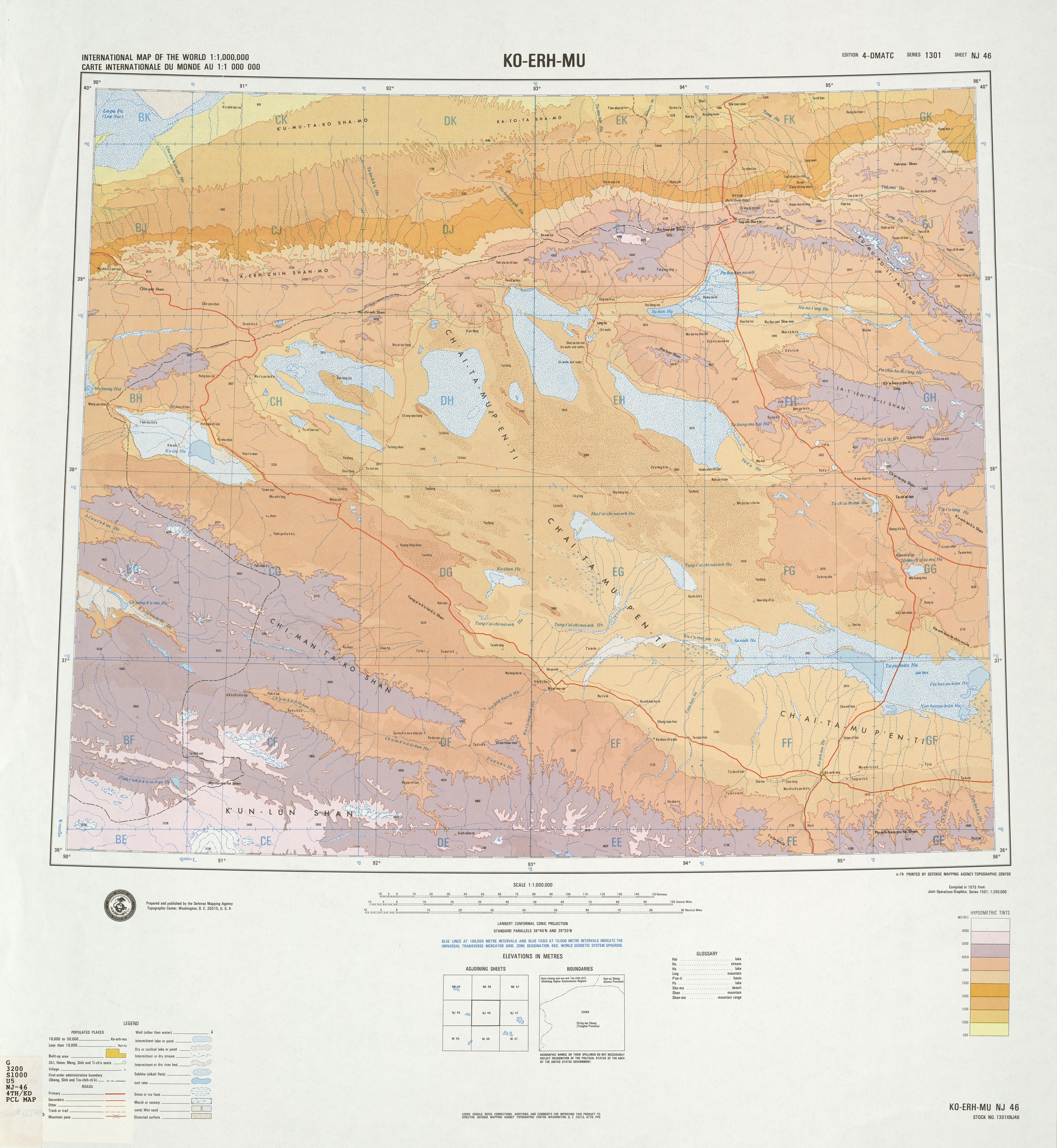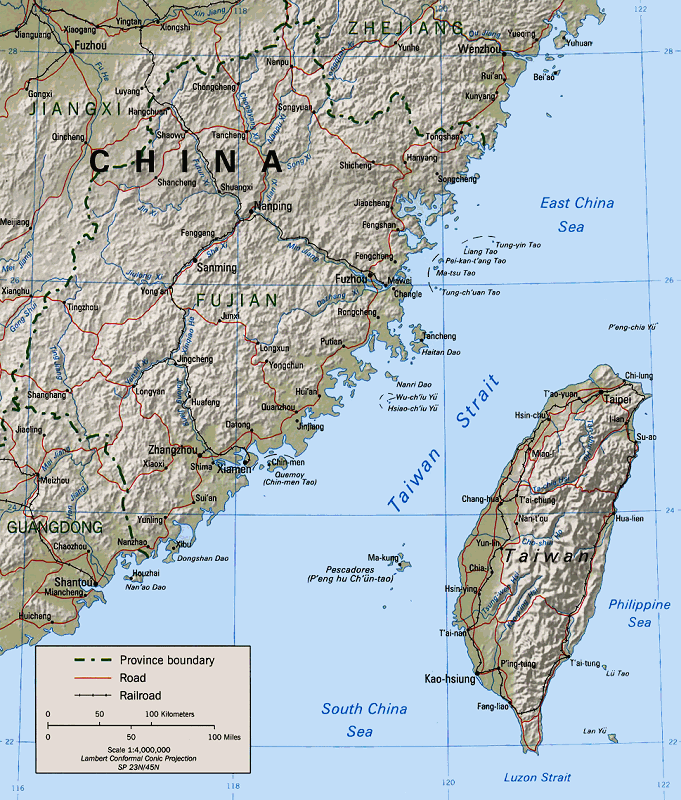|
Golmud
Golmud, also known by various other romanizations, is a county-level city in the Haixi Mongol and Tibetan Autonomous Prefecture of Qinghai Province, China. It is now the second-largest city in Qinghai and the third largest in the Tibetan Plateau (after Xining and Lhasa). The population in 2020 is 221,863. Name ''Golmud'' is a romanization of a Mongolian word meaning "rivers". ''Ge'ermu'' is the pinyin romanization of the Mandarin pronunciation of the same name's transcription into Chinese characters; it is sometimes misspelled ''Geermu''. ''Ko-erh-mu'' was the same name romanized using the Wade–Giles system; ''Golmot'' was the romanization used by the Chinese Postal Map. The Wylie romanization of the Tibetan form of the name is ''Nagormo''. History Golmud is a young city. It was first established in 1954 when the Transportation regiments of Qinghai-Tibet Corps set up a food distribution base, staffed by 10 people, at the current location. In May of that year, ... [...More Info...] [...Related Items...] OR: [Wikipedia] [Google] [Baidu] |
Golmud Railway Station
Golmud railway station, Geermu railway station or Ge'ermu railway station () is the main railway station of Golmud in Qinghai (People's Republic of China, China). The station is located at 2829 m above sea level and opened in 1979. This is an intermediate station on the Qinghai–Tibet railway and the eastern terminus of the Golmud–Korla railway. History Golmud railway station was rebuilt and expanded as part of the Golmud–Korla railway project. The new station was opened on 30 June 2020. References Stations on the Qinghai–Tibet Railway Railway stations in Qinghai Railway stations in China opened in 1979 {{Qinghai-railstation-stub ... [...More Info...] [...Related Items...] OR: [Wikipedia] [Google] [Baidu] |
Golmud River
The Golmud or Ge'ermu River is a river in Golmud County, Haixi Prefecture, Qinghai Province, China. It flows north from the Kunlun Mountains to Dabusun and (occasionally) West Dabusun Lakes in the central Qarhan Playa in the southeastern Qaidam Basin. The county seat Golmud lies along it. Names ''Golmud'' is a romanization of a Mongolian word meaning "rivers". ''Ge'ermu'' is the pinyin romanization of the Mandarin pronunciation of the same name's transcription into Chinese characters; it is sometimes misspelled ''Geermu''. ''Ko-erh-mu'' was the same name romanized using the Wade–Giles system. The Wylie romanization of the Tibetan form of the name is ''Nagormo''. It was formerly known as the from a town near its headwaters. Geography The Golmud flows north from the Kunlun Mountains, past Golmud, to a wide alluvial fan along the central part of the south side of the Qarhan Playa. For most of the year, only a small stream reaches Dabusun Lake but meltwater from the ... [...More Info...] [...Related Items...] OR: [Wikipedia] [Google] [Baidu] |
Lhasa
Lhasa, officially the Chengguan District of Lhasa City, is the inner urban district of Lhasa (city), Lhasa City, Tibet Autonomous Region, Southwestern China. Lhasa is the second most populous urban area on the Tibetan Plateau after Xining and, at an altitude of , Lhasa is one of the List of highest large cities, highest cities in the world. The city has been the religious and administrative capital of Tibet since the mid-17th century. It contains many culturally significant Tibetan Buddhism, Tibetan Buddhist sites such as the Potala Palace, Jokhang Temple and Norbulingka Palaces. Toponymy Lhasa literally translates to "place of gods" ( , god; , place) in the Lhasa Tibetan, Tibetan language. Chengguan literally translates to "urban gateway" ( zh, s=城关, p=Chéngguān) in the Chinese language. Ancient Tibetan documents and inscriptions demonstrate that the place was called Rasa (), which meant "goat's place", as it was a herding site. The name was changed to Lhasa, which ... [...More Info...] [...Related Items...] OR: [Wikipedia] [Google] [Baidu] |
Potash
Potash ( ) includes various mined and manufactured salts that contain potassium in water- soluble form.Potash , USGS 2008 Minerals Yearbook The name derives from ''pot ash'', plant ashes or soaked in water in a pot, the primary means of manufacturing potash before the Industrial Era. The word '''' is derived from ''potash''. Potash is produced worldwide in amounts exceeding 71.9 million |
Qarhan Playa
The Qarhan Playa or also misleadingly described as , is a playa in the Golmud and Dulan counties of Haixi Prefecture, Qinghai, China. Formerly a single unitary lake, it is now an expansive salt flat divided into four greater sections ( Dabusun, Big/ Small Bieletan, Suli, and N./ S. Huoluxun) which contain a number of smaller salt lakes, the largest of which is Dabusun Lake. The area is heavily exploited for its valuable salt, mineral, and rare earth reserves but parts are also protected as a national park and contribute to regional tourism. Name ''Qarhan'' is the GNC romanization of the area's Mongolian name, originally derived from the word for "white" (Modern , ''tsagaan'', or , ''čaɣan'').. ''Cha'erhan'' is the pinyin romanization of the Mandarin pronunciation of , a modification of the original transcription into Chinese characters of the same name; it is also sometimes clipped into ''Charhan'' in English sources. The Chinese name, which does not distinguish bet ... [...More Info...] [...Related Items...] OR: [Wikipedia] [Google] [Baidu] |
Qinghai-Tibet Highway
China National Highway 109 connects Beijing with Lhasa. It runs westwards from Beijing via Datong, Yinchuan and Xining to Golmud before turning southwest to Lhasa. The portion of the highway from Xining to Lhasa is known as the Qinghai-Tibet Highway. The total length of the route is 3,901 km. Fushi Road or Jinglan Road forms the stretch of G109 in Beijing, as it begins from Fuchengmen and traverses through Shijingshan. The majority of the Beijing section is in Mentougou District. The section of the highway within western Qinghai and Tibet, from Golmud to Lhasa, is paralleled by the Qinghai-Tibet Railway. The highway reaches its highest elevation of at Tanggula Pass. Construction of this section started on 11 May 1954. "Tasked with carrying upwards of 85 per cent of goods in and out of Tibet, the Qinghai-Tibet Highway has been dubbed the "Lifeline of Tibet." ... Since it was opened to traffic in 1954, the central government has spent nearly 3 billion yuan (US$362 mill ... [...More Info...] [...Related Items...] OR: [Wikipedia] [Google] [Baidu] |
Classical Tibetan
Classical Tibetan refers to the language of any text written in Tibetic after the Old Tibetan period. Though it extends from the 7th century until the modern day (along with Arabic, Ge'ez, and New Persian, it is one of the handful of 'living' classical languages), it particularly refers to the language of early canonical texts translated from other languages, especially Sanskrit. The phonology implied by Classical Tibetan orthography is very similar to the phonology of Old Tibetan, but the grammar varies greatly depending on period and geographic origin of the author. Such variation is an under-researched topic. In 816 AD, during the reign of King Sadnalegs, literary Tibetan underwent a thorough reform aimed at standardizing the language and vocabulary of the translations being made from Sanskrit, which was one of the main influences for literary standards in what is now called Classical Tibetan. Nouns Structure of the noun phrase Nominalizing suffixes — or and — ar ... [...More Info...] [...Related Items...] OR: [Wikipedia] [Google] [Baidu] |
Wylie Romanization
Wylie transliteration is a method for transliterating Tibetan script using only the letters available on a typical English-language typewriter. The system is named for the American scholar Turrell V. Wylie, who created the system and published it in a 1959 ''Harvard Journal of Asiatic Studies'' article. It has subsequently become a standard transliteration scheme in Tibetan studies, especially in the United States. Any Tibetan language romanization scheme faces the dilemma of whether it should seek to accurately reproduce the sounds of spoken Tibetan or the spelling of written Tibetan. These differ widely, as Tibetan orthography became fixed in the 11th century, while pronunciation continued to evolve, comparable to the English orthography and French orthography, which reflect late medieval pronunciation. Previous transcription schemes sought to split the difference with the result that they achieved neither goal perfectly. Wylie transliteration was designed to precisely transc ... [...More Info...] [...Related Items...] OR: [Wikipedia] [Google] [Baidu] |
Chinese Postal Map
The history of the postage stamps and postal history of China is complicated by the gradual decay of Imperial China and the years of civil war and Japanese occupation in the 1930s and 1940s. In modern times, postal delivery is handled by China Post. Early history Regular government and military postal service is known from the Zhou dynasty (1046-771 BCE). In the Han dynasty (202 BCE-220 CE) and Tang dynasty, postal service handled military communications. During the Song Dynasty, the postal system included delivery levels of foot, horse, and express. During the Yuan dynasty under Kublai Khan in the 12th century, China was integrated into the much larger Mongolian Örtöö system. Marco Polo reported that there were 10,000 post stages during that time. In addition, private letters were carried by the Min Hsin Chu, a system of letter guilds ('' hongs''). In this period, every prefecture and county had express delivery stations. The 1727 Treaty of Kyakhta with Russia provi ... [...More Info...] [...Related Items...] OR: [Wikipedia] [Google] [Baidu] |
Wade–Giles System
Wade–Giles ( ) is a romanization system for Mandarin Chinese. It developed from the system produced by Thomas Francis Wade during the mid-19th century, and was given completed form with Herbert Giles's ''A Chinese–English Dictionary'' (1892). The romanization systems in common use until the late 19th century were based on the Nanjing dialect, but Wade–Giles was based on the Beijing dialect and was the system of transcription familiar in the English-speaking world for most of the 20th century. Both of these kinds of transcription were used in postal romanizations (romanized place-names standardized for postal uses). In mainland China, Wade–Giles has been mostly replaced by Hanyu Pinyin, which was officially adopted in 1958, with exceptions for the romanized forms of some of the most commonly used names of locations and persons, and other proper nouns. The romanized name for most locations, persons and other proper nouns in Taiwan is based on the Wade–Giles derived ro ... [...More Info...] [...Related Items...] OR: [Wikipedia] [Google] [Baidu] |
Transcription Into Chinese Characters
Transcription into Chinese characters is the use of traditional or simplified Chinese characters to '' phonetically'' transcribe the sound of terms and names of foreign words to the Chinese language. Transcription is distinct from translation into Chinese whereby the ''meaning'' of a foreign word is communicated in Chinese. Since English classes are now standard in most secondary schools, it is increasingly common to see foreign names and terms left in their original form in Chinese texts. However, for mass media and marketing within China and for non-European languages, particularly those of the Chinese minorities, transcription into characters remains very common. Except for a handful of traditional exceptions, most modern transcription in mainland China uses the standardized Mandarin pronunciations exclusively. Official standards Modern Han Chinese consists of about 412 syllables in 5 tones, so homophones abound and most non-Han words have multiple possible transcripti ... [...More Info...] [...Related Items...] OR: [Wikipedia] [Google] [Baidu] |
Standard Mandarin
Standard Chinese ( zh, s=现代标准汉语, t=現代標準漢語, p=Xiàndài biāozhǔn hànyǔ, l=modern standard Han speech) is a modern Standard language, standard form of Mandarin Chinese that was first codified during the Republic of China (1912–1949), republican era (1912–1949). It is designated as the Languages of China, official language of mainland China and a major language in the United Nations languages, United Nations, Languages of Singapore, Singapore, and Languages of Taiwan, Taiwan. It is largely based on the Beijing dialect. Standard Chinese is a pluricentric language with local standards in mainland China, Taiwan and Singapore that mainly differ in their lexicon. Hong Kong written Chinese, used for formal written communication in Hong Kong and Macau, is a form of Standard Chinese that is read aloud with the Cantonese reading of characters. Like other Sinitic languages, Standard Chinese is a tone (linguistics), tonal language with topic-prominent langua ... [...More Info...] [...Related Items...] OR: [Wikipedia] [Google] [Baidu] |








